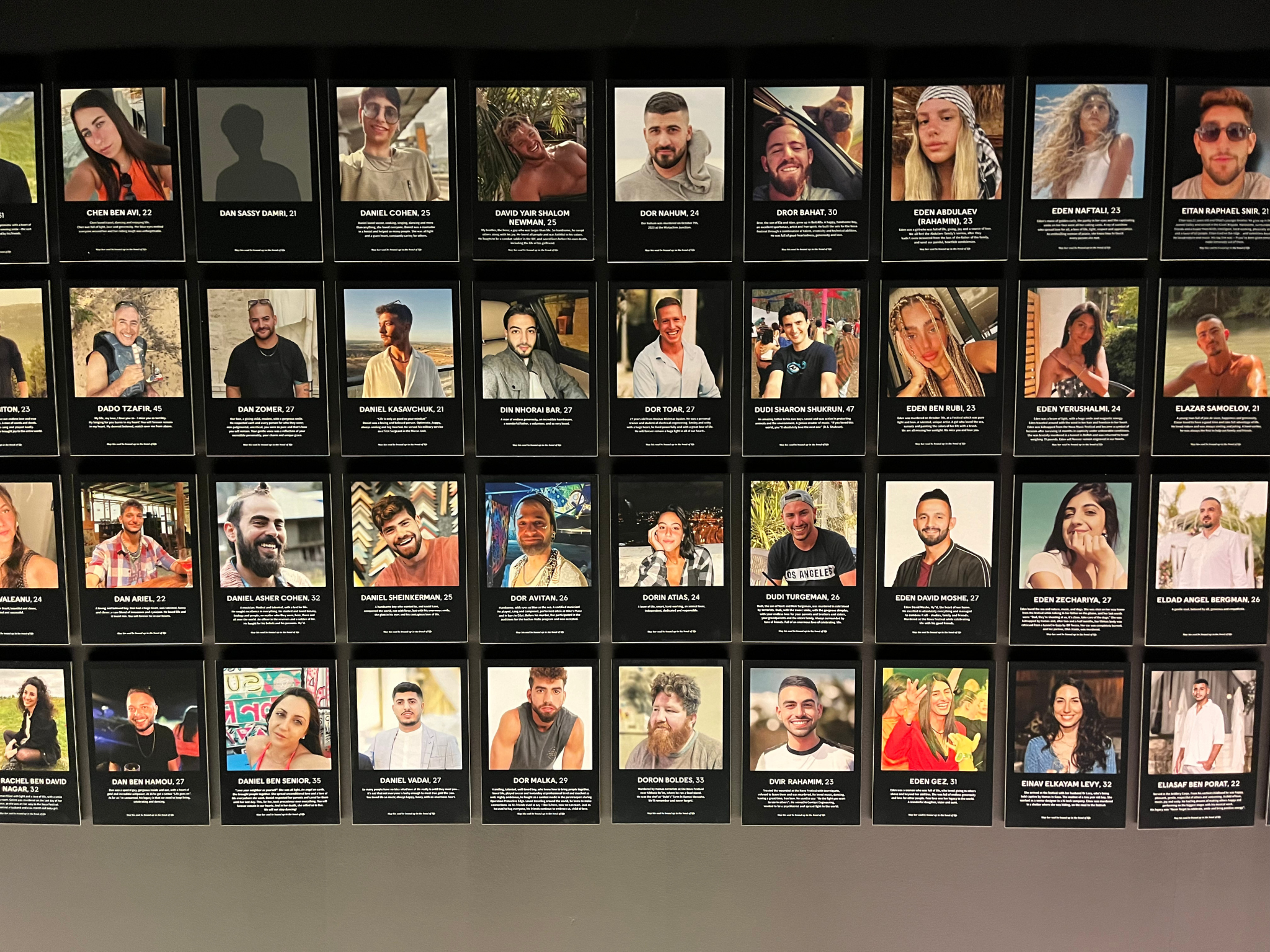
By Ethan Rode, Communications Specialist, Jewish Federation of Ottawa
This past Sunday, I joined a trip to the Nova Exhibition in Toronto. It was the first of two opportunities (the next being this Sunday, May 25) offered at a highly discounted rate, which included both the exhibition itself and a powerful talk from a survivor or relative of a survivor.
The trips are a joint initiative between the Jewish Federation of Ottawa, Jewish Family Services, Kehillat Beth Israel, Temple Israel, Congregation Machzikei Hadas, and the Beth Shalom Legacy Fund — a community partnership that ensured participants were not only supported logistically but also emotionally and spiritually. Each organization brought meaningful resources and experience to the table.
The exhibit is laid out in a sort of chronological order, beginning with a short film about the Nova Music Festival. We were then brought into the main space, which opened with videos taken by terrorists as they broke through the border fence from Gaza into Israel.
The rest of the exhibition follows the sequence of events that unfolded: from people waking up and enjoying the music, to the arrival of the terrorists, and the devastating aftermath as families searched desperately for their loved ones.
The large, dark space is filled with fog and sound, creating a disorienting atmosphere. Screams, trance music, gunfire, and flashing lights attempt to encapsulate the chaos and terror of that day.
As I moved through the exhibit, I was confronted by footage I hadn’t seen since October 7, 2023. I kept thinking to myself, “Oh, I forgot about this. And this. And this.”
Videos of Noa Argamani, Romi Gonen, and others being herded away by terrorists into pickup trucks, recordings of final phone calls, and police bodycam footage — all played at full volume in surround sound — made the horrors of October 7th far more visceral than I had ever experienced before.
Reconstructed “death shelters” — bomb shelters that were infiltrated — offered an even more immersive and chilling perspective. Burnt-out cars, port-a-potties, and abandoned campsites dotted the space.
Perhaps the most meaningful tribute to the victims was the display of shoes — found or removed from those murdered that day. Seeing them offered, on a smaller scale, something of what I imagine people feel when confronted with the piles of shoes at Auschwitz.
Following this part of the exhibit, we heard from Ariel Lisman, the older brother of Anita Lisman, who was murdered alongside her boyfriend Segev Shushan. Ariel painted a vivid picture of his sister, describing her as someone with a deep love for life.
As he recounted her final hours, he showed footage of the terrorists attacking their car —first from a dashcam inside the vehicle, and then from the terrorists’ bodycams.
I’ve always felt angry and sad about what happened that day, but this experience left me feeling raw. I sat in what’s called the healing room to try and absorb what I had just seen and heard. The long bus ride back to Ottawa gave me time to reflect, but I’m still left wondering how people can be so cruel. I keep asking myself how this conflict could ever end. I keep hoping there will be a positive outcome, one day.
One important source of hope and healing comes through the Tribe of Nova Foundation. For survivors and the families of victims, this foundation offers more than support — it offers a lifeline. It raises funds to provide mental health services to those affected, and many have found ways to begin processing their unimaginable pain.
Their mission is “to support long-term recovery from trauma for the 3,500 survivors and 2,500 members of bereaved families.”
Though the exhibition ends with the hopeful message “we will dance again” — especially in light of how the Tribe of Nova continues to support survivors with mental health care and community — it is still incredibly hard to feel hope after witnessing such profound devastation. Especially knowing that so many still deny it ever happened.
This was an exceptionally difficult experience. There is no way around that. But it is important to see. I am grateful I had the opportunity to go and bear witness. If you feel this is something you need to see, I encourage you to go — but please prepare yourself. The footage is graphic. The sounds are intense. You may hear gunfire. You may be seeing and hearing things for the first time, and it will be hard.
The exhibit is not designed for visitors under the age of 16. It will remain in Toronto until June 8, and there is still space available for the Federation’s second trip this Sunday, May 25.
Learn more about this opportunity here
Learn more about the Nova Exhibition here

